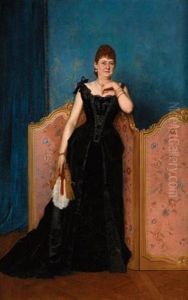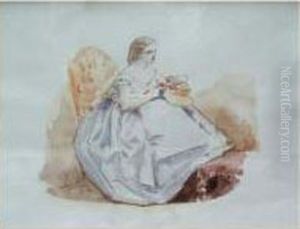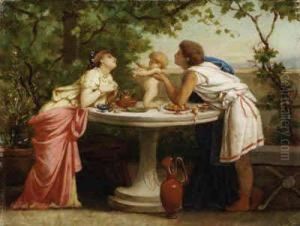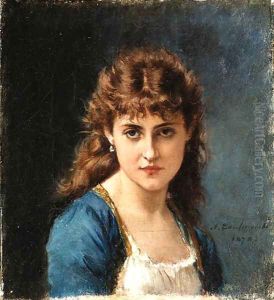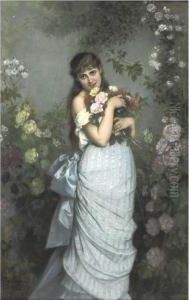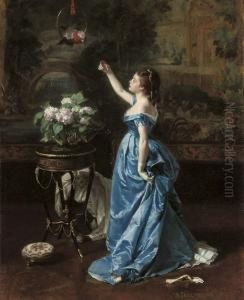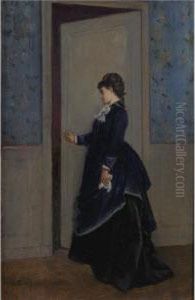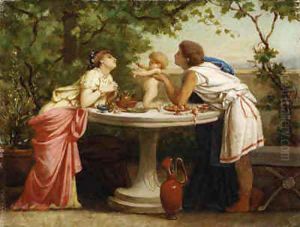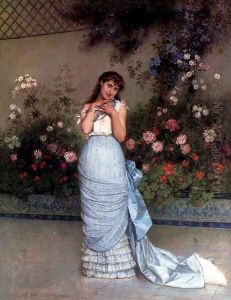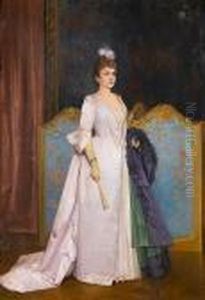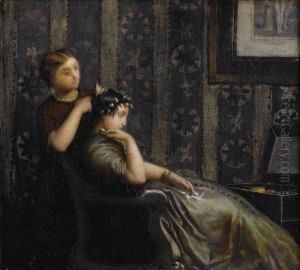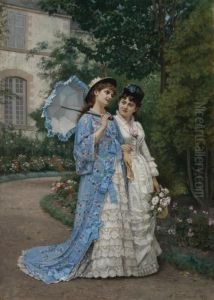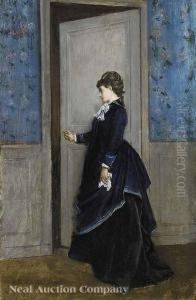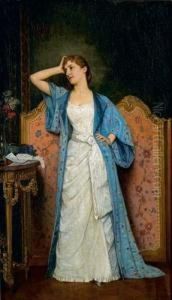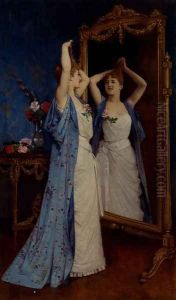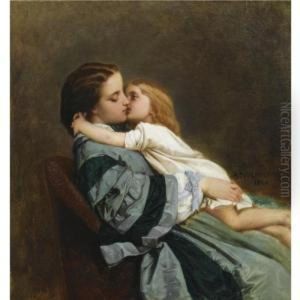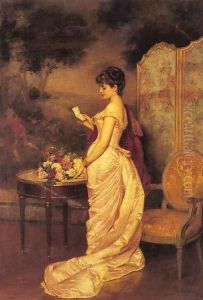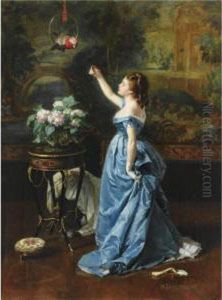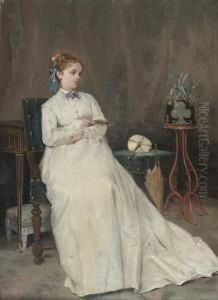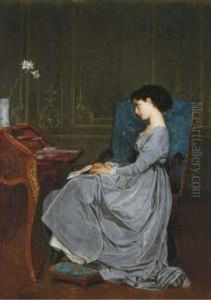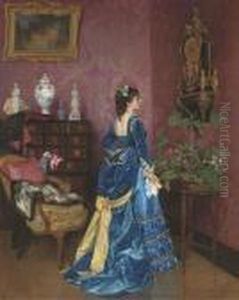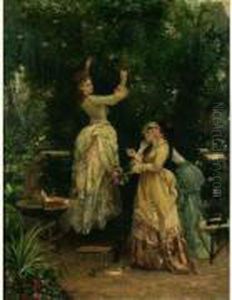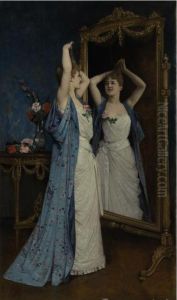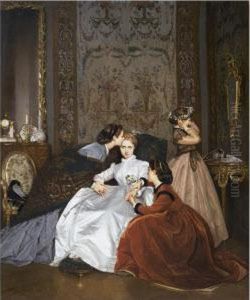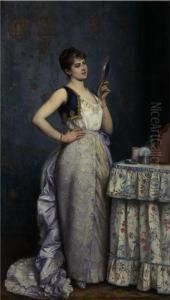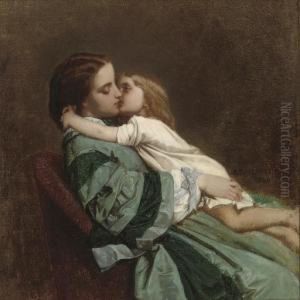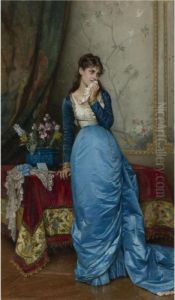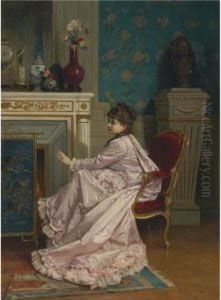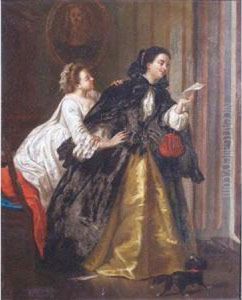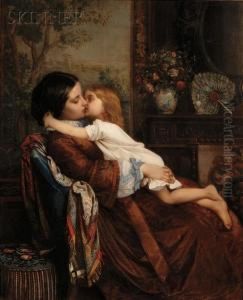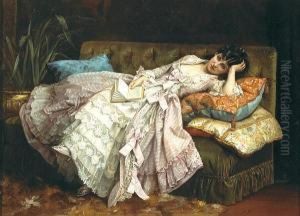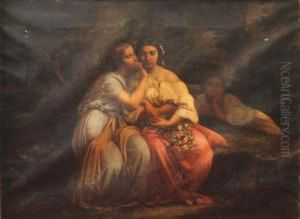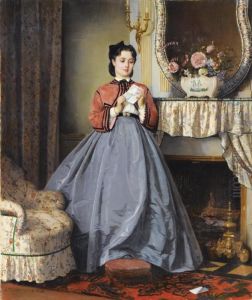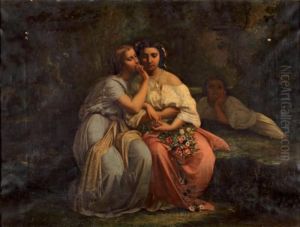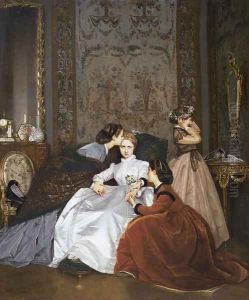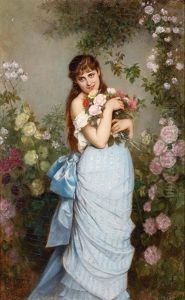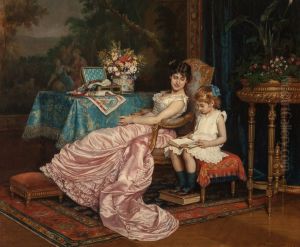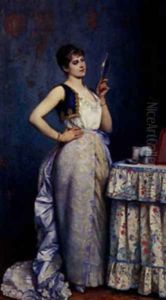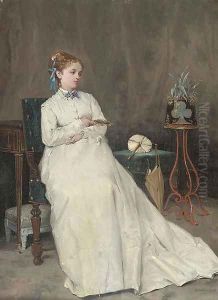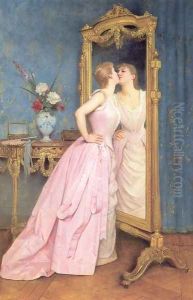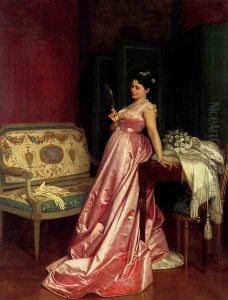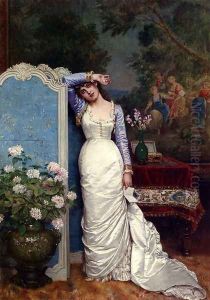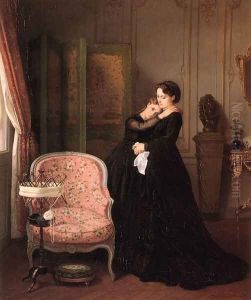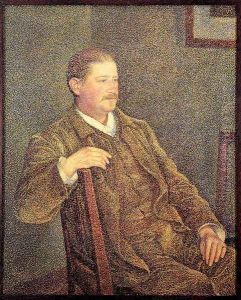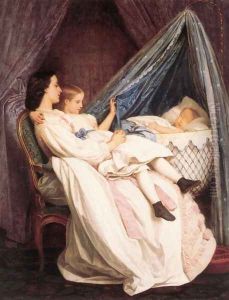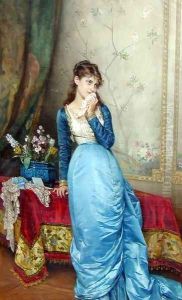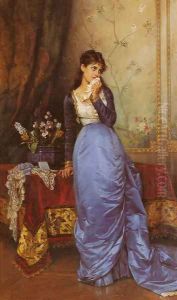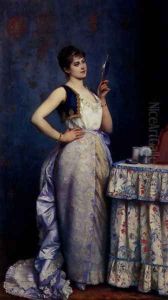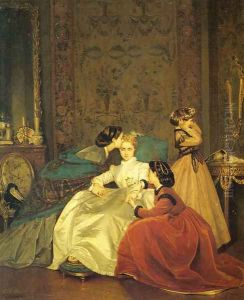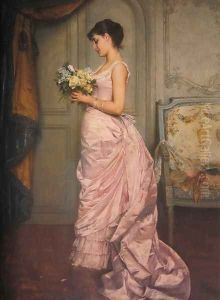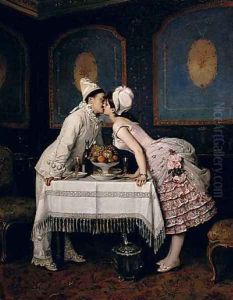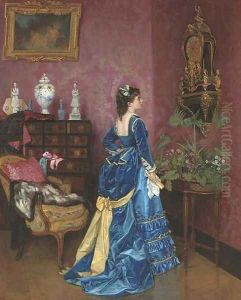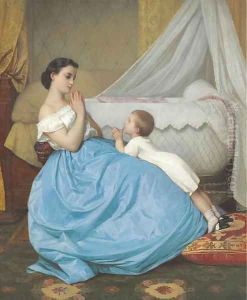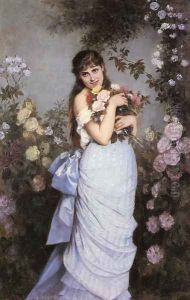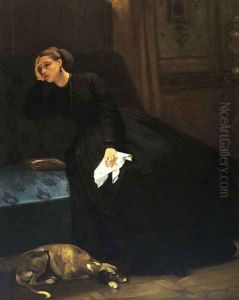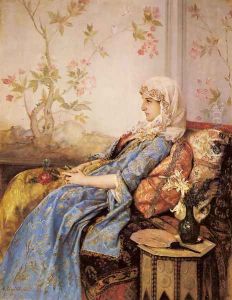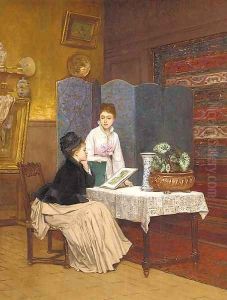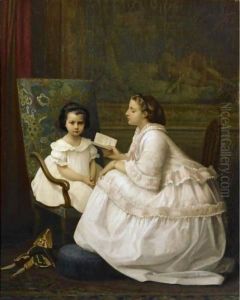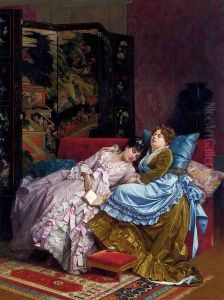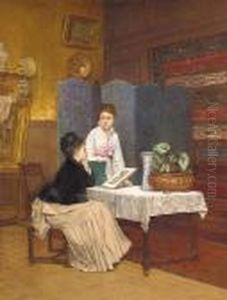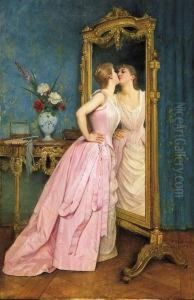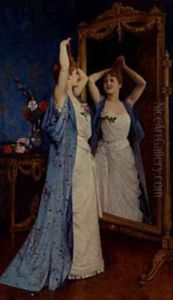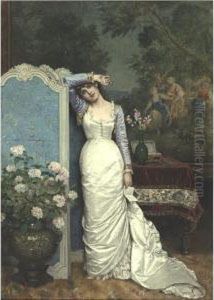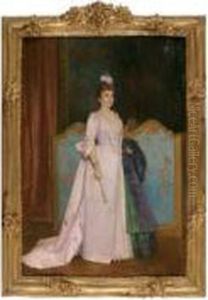Toulmouche Auguste Paintings
Auguste Toulmouche was a 19th-century French painter, renowned for his luxurious portraits of Parisian women. Born on September 21, 1829, in Nantes, France, Toulmouche showed an early interest in art, which led him to pursue formal training. His talents were recognized early on, and he went on to study under the esteemed French painter Charles Gleyre. Gleyre was known for his influence on the artists who would initiate the Impressionist movement, though Toulmouche's own style leaned more towards the academic and romantic traditions, with a focus on intricate detail, rich colors, and an almost photographic realism.
Toulmouche gained fame for his depictions of the opulent interiors of Parisian society, often portraying elegantly dressed women in moments of private reflection or leisure. His works were celebrated for their exquisite portrayal of textures, particularly the luxurious fabrics of the women's gowns, and for the detailed rendering of interior settings. This attention to detail and his ability to capture the essence of bourgeois life in Paris earned him considerable success during his lifetime.
In 1852, Toulmouche's career took a significant step forward when he was awarded a medal by the Paris Salon, a prestigious annual art exhibition in France. His success at the Salon helped to cement his reputation, and he became a sought-after portraitist among the Parisian elite. In 1861, he married Clémence Isaure Fould, a connection that further elevated his status; she was the niece of a wealthy banker and arts patron, which likely contributed to Toulmouche's ability to secure commissions from the upper echelons of French society.
Throughout his career, Toulmouche remained closely aligned with traditional artistic values, even as the art world around him began to shift towards Impressionism and other modernist movements. He was awarded the Legion of Honour in 1870, recognizing his contributions to French art. Despite the changing tides of artistic preference, Toulmouche's work continued to be popular, especially among collectors and those who appreciated the beauty and elegance of his detailed portrayals.
Auguste Toulmouche died on October 16, 1890, in Paris. Though his work was somewhat overshadowed by the advent of modernism in the years following his death, recent reevaluations of 19th-century art have led to a renewed interest in his contributions to French painting. Today, Toulmouche is remembered for his mastery in depicting the grace and sophistication of Parisian society, offering a window into the lives of the 19th-century bourgeoisie.
